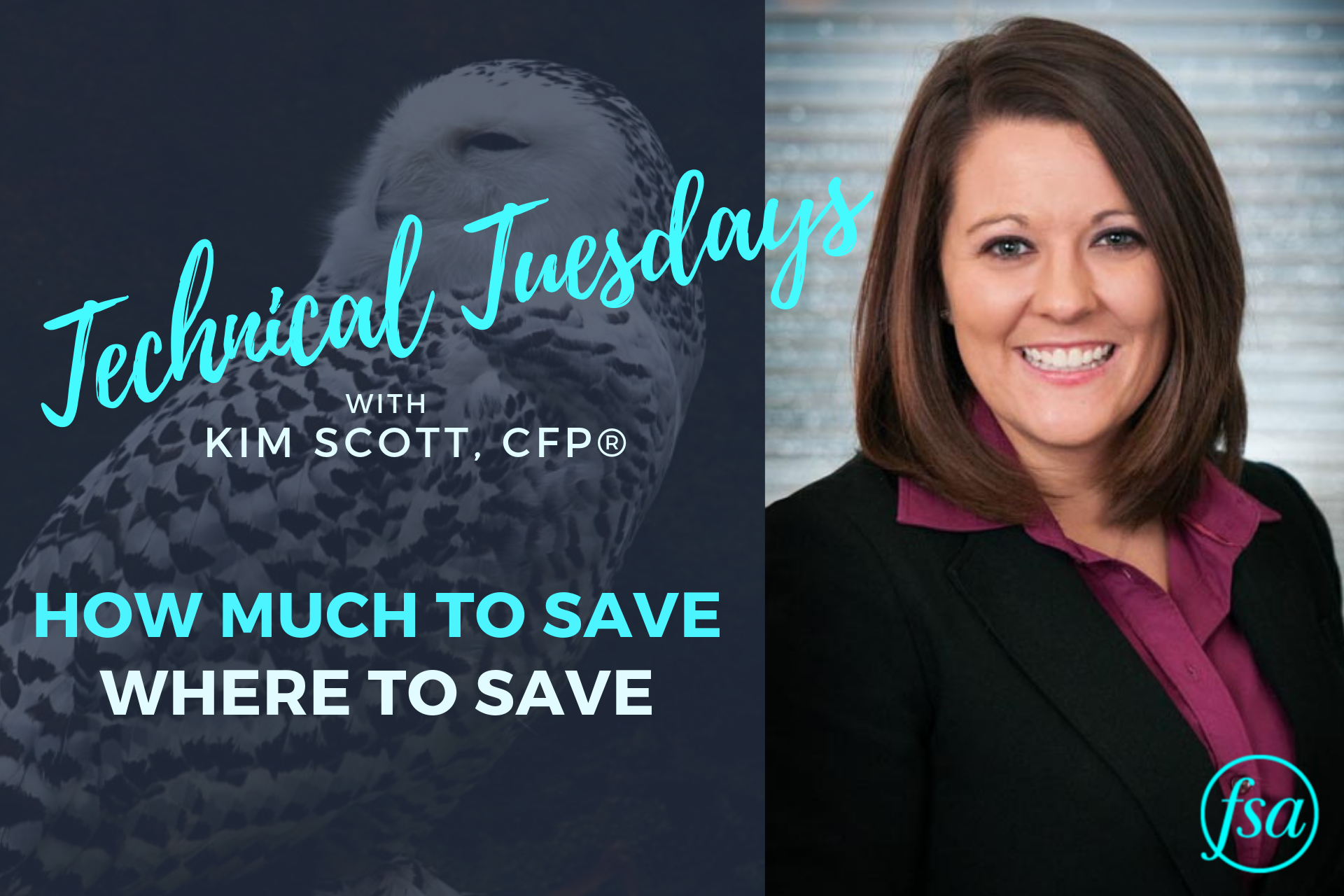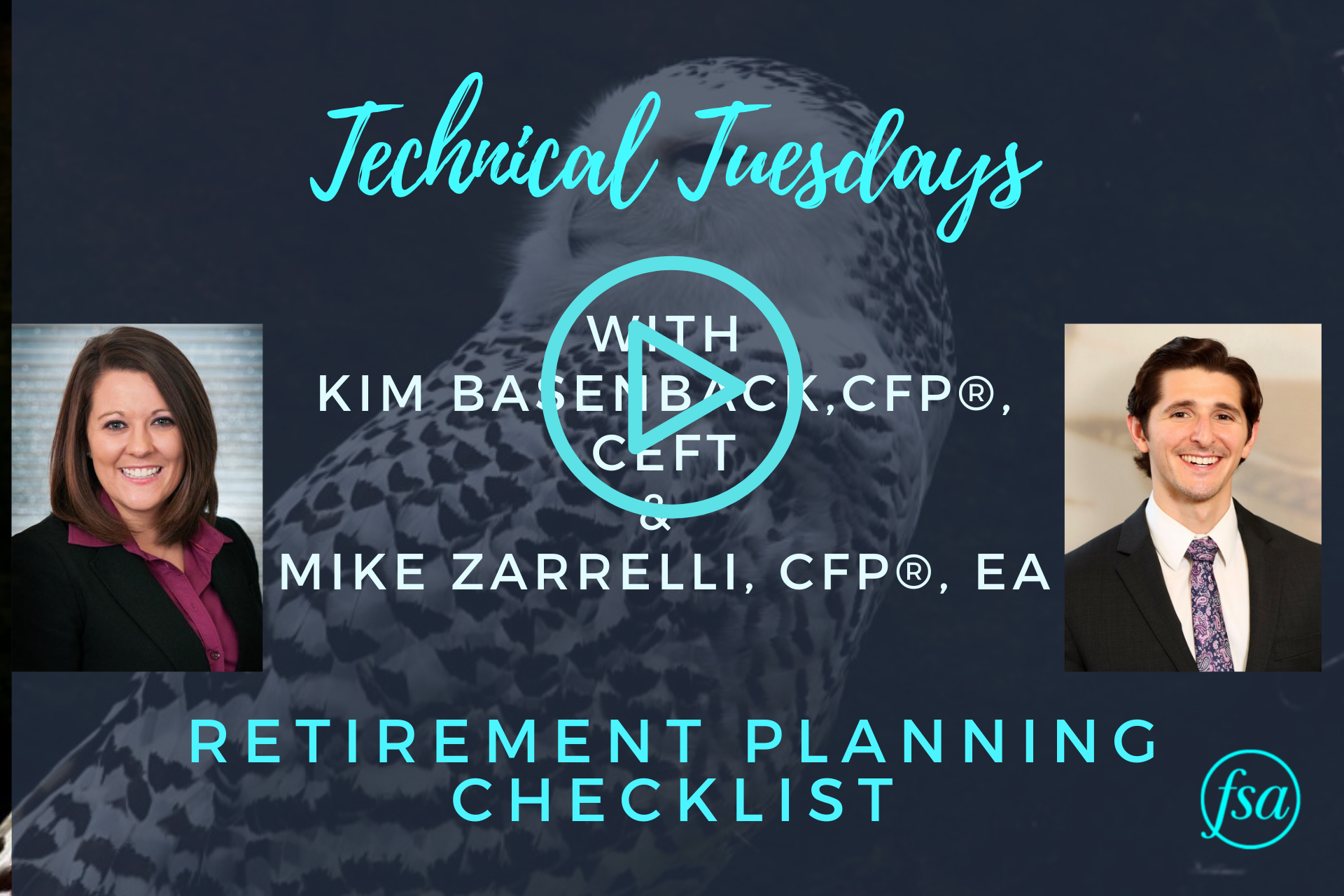Where should I save my money? How much should I save? Kim Scott, FSA’s Director of Financial Planning, answers these questions in this week’s episode of Technical Tuesday.
Download Our Cheat Sheet!

Where to Save Transcript
Welcome to Technical Tuesday from Financial Services Advisory! This is Kim Scott, and I am your host today. Today’s question is a common one we get, which is: How much should I be saving and where?
1. Maximize Your Employer Match
The first place to start is to maximize the match on your employer retirement plan. Now if you’re not sure exactly what that is, you can see one of our previous videos [on employer match], but basically, you’re maximizing the money that they’re putting into the plan. This is free money. If you put in something, they’ll put in something. So make sure you’re maximizing that first.
2. Set up Your Emergency Fund
The second place would be to make sure that you have an emergency fund set up. Do you have enough set aside that if something were to happen financially – you needed whether you lost a job or whether you need additional money … that you would have access to funds immediately. So those are the first two spots.
3. Maximize Your Roth IRA, if Eligible
The third place I would go is if you qualify for a Roth IRA, to maximize that. That indexes each year, so keep an eye on how much you can contribute. And it also has a limit as far as what your income can be in order to contribute, so if you’re not sure about that, please see our previous video as well on Roth IRAs.
4. Set Money Aside for Shorter-Term Spending Goals
Once you’ve saved to those three buckets, you’ve really reached a decision point, and it really depends on your specific situation. Let’s say you’re saving up for a bigger purchase, whether it’s a house or a wedding, that next bucket you save to may be outside of a retirement plan. That way you can access it easier.
5. Maximize Your Employer Retirement Plan
If you’ve satisfied that savings requirement, or if you don’t have those larger goals coming up, the next bucket to save to would be to maximize your 401(k) or other retirement plan. We already talked about maximizing the employer match portion, now you can go back and maximize the portion you’re able to contribute. So this changes from year to year. Make sure you check the IRS website to see how much you’re able to contribute in a given year. And then also if you’re over the age of 50, generally there’s a catch-up provision so you’re able to contribute a little bit more.
As a general rule of thumb, we suggest your long-term savings should be at least 15 to 20 percent of your gross income, depending on your age and spending goals. We are happy to work with you and your family to develop a plan that fits your unique situation.
If you have any other questions, feel free to give us a call or shoot us an email. For now, I’m Kim Scott and this has been Technical Tuesday!
FSA’s current written Disclosure Brochure and Privacy Notice discussing our current advisory services and fees is available at www.FSAinvest.com/disclosures or by calling 301-949-7300.




